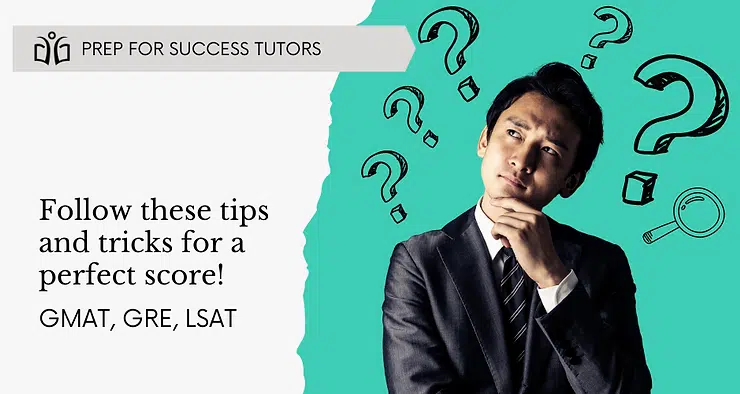Updated: Feb 7
This blog post breaks down each type of question on the Logic Sections of the LSAT, GMAT, and GRE. On all three of these exams, the structure of the questions is the same; however, each exam calls the sections a different name:
LSAT: Logical Reasoning
GMAT: Critical Reasoning
GRE: Logic-Based Reading Comprehension

Type of Question | How to Identify This Type of Question? | What Will the Correct Answer Accomplish? | What is the Best Strategy for This Type of Question? |
Strengthen | The question will include words like “strengthen” “supports” “justify” “best reason” etc. | The answer will make the conclusion more true. | Identify the conclusion of the argument and find an answer that proves the conclusion true. |
Weaken | The question will include words like “weaken” “cast doubt” “calls into question” “vulnerable”, “undermine” etc. | The answer will make the conclusion less true. | Identify the conclusion of the argument and find an answer that proves the conclusion less true or false. Often, the weakening answer shows an alternate way to get to the conclusion, showing that the author’s original logic is wrong. |
Paradox/Explanation | The question will include words like “explain the paradox”, “explain the discrepancy”, “contributes to the explanation” “explains the argument” “accounts for” etc. | The answer will provide an explanation to why the conclusion coccus or why the apparent contradiction (otherwise known as the paradox) occurs. | Identify the discrepancy (otherwise known as the paradox) and propose a reason why that happens. The reason is your answer. |
Evaluation | The question will include words like “useful to determine” “useful to evaluate” “develops the argument by” etc. | The answer will either validate or invalidate the argument. | Complete the Variance Test Method. This method is when you find two polar opposite instances that maximize the outcome of the conclusion. Meaning, one side helps strengthen and the other side helps weaken the argument. This variance will be your answer to the question to determine the validity. |
Assumption | The question will include words like “the argument depends on which assumption” “which assumption is made in drawing the conclusion” “what assumption does the argument depend” etc. | The answer will fill the gap in the argument. Specifically it will fill the gap between the premises and conclusion. | Identify the conclusion and fill in the blanks in this sentence “The arguer believes [conclusion], because [support]”. This will help you identify a possible gap in the argument that will make the argument more true. That gap will be your assumption, which will be your correct answer. |
Boldface | You will see a portion of the prompt is bold. Additionally, the question will ask you to identify the “boldface” sections. | Identifying the purpose of the boldface text in the prompt. | Memorize the definitions of parts of the argument listed below and use these concepts in answering the question. |
Parts of the Argument:
Another important factor to study is the definition of each part of the argument. This not only helps for the boldface questions but also helps when reading the explanations of answer choices. Below I have included all the parts of an argument and their definitions.
Main Conclusion—a summary of the argument’s primary position
Intermediate Conclusion—a position utilized by the argument as a stepping stone in order to advance toward the main conclusion
Premise—a theory or proposition upon which an argument is based or from which a conclusion is drawn
Fact—information generally believed to be true OR known to be true—usually advanced as evidence to support a premise
Evidence—a specific type of fact offered in support of a theory or premise
Context—a frame of reference of value in the interpretation of aspects of an argument or the argument’s components
Consideration—a factor (fact) to be taken into account in forming a judgment or decision
Position—a point of view or attitude about an issue or question
Assumption—a position or belief that is taken to be true, without proof
Principle—a basic or essential truth (stronger and broader than a fact)
Judgment—an opinion formed from a consideration of the facts.
Hypothesis/Theory—a supposition or proposed explanation made on the basis of limited evidence as a starting point for further investigation.
Qualifiers:
An additional concept that needs to be taken into consideration when completing this
For instance, take a look at the three arguments below.
- Don’t believe anything politicians say. All politicians are corrupt.
- Don’t believe most of what politicians say. Most politicians are corrupt.
- Be careful believing what politicians say. A lot of politicians are corrupt.
Which argument is the strongest? Although argument 1 is the most assertive, it’s also the weakest argument. It is the least likely to be true because it uses absolute terms (anything and all) in both its conclusion and premise. Argument 3 may seem the weakest because of its qualifiers, but it is actually the strongest because it is the most plausible argument of the three. It is most likely to be true.
List of qualifiers:
few
rarely
some
sometimes
in some cases
it is possible
it seems
it may be
many
routinely
most often
one might argue
perhaps
possibly
for the most part
all
most




